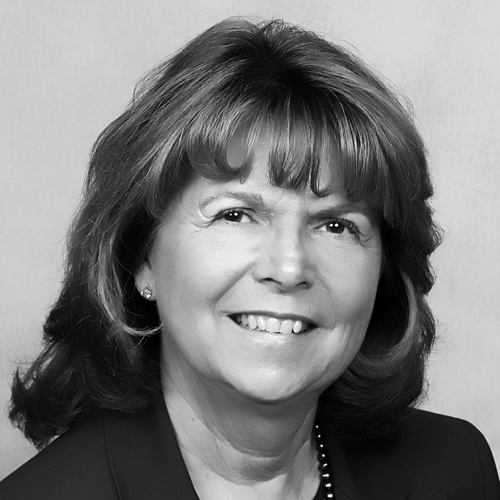
Few words capture the health information-technology sector more than “change.” Anyone with even a casual understanding of health IT recognizes that change is constantly afoot. And within the medical arena, Krishna Ramachandran, chief administration officer at DuPage Medical Group, has embraced technological innovations to solve complex business problems in healthcare to ultimately enhance patient care.
DuPage Medical Group is a 450-doctor group in the western suburbs of Chicago, with approximately $600 million in revenue. The medical group covers more than fifty subspecialties at seventy locations. In his role, Ramachandran oversees most everything that happens outside of the clinical realm—from IT to quality improvement, from case management to coding. In addition, he is the chief administration officer of Midwest Physician Administrative Services, a wholly owned subsidiary of DuPage, where he works with such heavy hitters as the University of Chicago and Northwestern University to provide back-office billing and managed-care services.
During the past ten years, technology has dramatically changed how the healthcare industry does business. Technology advancements have driven hospitals and healthcare organizations to reinvent themselves and their internal processes, and DuPage Medical Group is no exception.
“The healthcare system is shifting from a ‘fee for service’ to a ‘fee for value’ approach,” Ramachandran says. “We are trying to move from per-service mentality to an approach of ‘how are we taking care of our patients in a broader sense?’”
“We will not only enable our patients to lead better lives, but we will have a great opportunity to save the healthcare system a whole lot of money.”
As such, Ramachandran continually uses technology to drive change within DuPage and the healthcare system as a whole. For Ramachandran, some of the biggest technological advancements that provided the stepping-off point for the next phase of advancements came in 2010, when DuPage introduced physician dashboards.
These dashboards were created to help measure DuPage’s outcomes so that the medical group can manage change and move from mere data to actual action. Doctors can now use these metrics to determine how they are doing in terms of clinical quality and how they are working with DuPage’s patients.
“These are dashboards that provide data so doctors can see how they and their peers are performing,” Ramachandran says. “The dashboard system has been well received by our physicians and staff as a way to communicate transparently about progress. We are using this technology in the new landscape of value-based care, allowing us to show, using metrics, how we are doing in the cost arena as [it pertains] to readmissions, generic medications, clinical-quality outcomes, or even how accessible we are for our patients for online appointments. They are used to make our performance transparent.”
By making use of its data, the problem DuPage is trying to solve is this: 80 percent of healthcare costs that the United States pays for comes from 15 percent of patients, many of whom suffer from multiple complex conditions.
“If you can use data to tackle some of these complicated illnesses in patients with multiple conditions, we can use our clinical expertise to get them better,” Ramachandran says. “We will not only enable our patients to lead better lives, but we will have a great opportunity to save the healthcare system a whole lot of money.”
Using his technology background in electrical and computer engineering, coupled with an MBA from Northwestern University’s Kellogg School of Management, Ramachandran is able to collaborate with DuPage’s physicians and clinical staff.
“The IT components of the systems we are implementing have a lot of touch points throughout much of the organization, so I have to rely on others to also embrace the growing role of technology in healthcare, to make it more efficient and to look at more opportunities,” Ramachandran says. “We need to constantly ask ourselves, ‘How do we align technology with operations to improve the outcomes for the organization?’”
As such, Ramachandran is always looking for innovative ways to improve DuPage’s internal processes, resulting in improved, efficient healthcare for patients. For instance, DuPage has recently embraced e-visit technology, whereby patients can use the group’s patient portal, or app on their phone, to be “seen” by a doctor about acute conditions such as cough, colds, fever, etc. Patients can also schedule a video visit with a doctor, who will see a patient through a secure video feed with a secure messaging component.
“Virtual care has been a big recent focus at DuPage,” Ramachandran says. “It is a key component of our three pillars: quality, efficiency, and access. E-visits help us be more accessible to our patients. We want to meet our patients where, when, and how they want to be met. It is an efficient way of delivering care to patients with certain conditions. It won’t replace face-to-face clinical care. Rather, we want it to be a partnership between patients, technology, and clinicians.”
As part of his goal of staying innovative within the industry, Ramachandran advises a number of healthcare start-ups, who keep him abreast of the problems that the start-up community is trying to solve. Ramachandran recently partnered with one that offered a charge-capture solution for its physicians, who were using paper slips to submit fees when seeing their patients in inpatient hospital settings.
“The start-up created an app for us that allows our doctors to open up and drop in the fee for the services they perform on an inpatient basis, which subsequently interfaced to our practice management system,” Ramachandran says.
DuPage Medical Group extended its work with this start-up to create a secure texting program that would allow physicians to communicate with each other about patient care when managing cases. “Our doctors began texting each other when comanaging a patient or when they needed to communicate about a specific case,” Ramachandran says. “It was far more efficient than working through each other’s staff to get phone messages to the other person.”
However, he adds, although it was a great solution, it was ultimately not secure. So the start-up company was brought back in to devise a secure paging system and secure texting feature within that system. Because the system was similar in construct to the charge-capture application originally designed for DuPage, there was a seamless integration for DuPage’s staff.
These initiatives have helped create a culture of innovation throughout DuPage Medical Group—one that Ramachandran is happily taking the reins on as chief administration officer. And it’s a culture that is not looking to stop anytime soon.
“I enjoy using technology to drive change,” Ramachandran says. “I’m very passionate about this. I’m eager to see how we can further use technology to help innovate the healthcare system and further improve patient care.”

